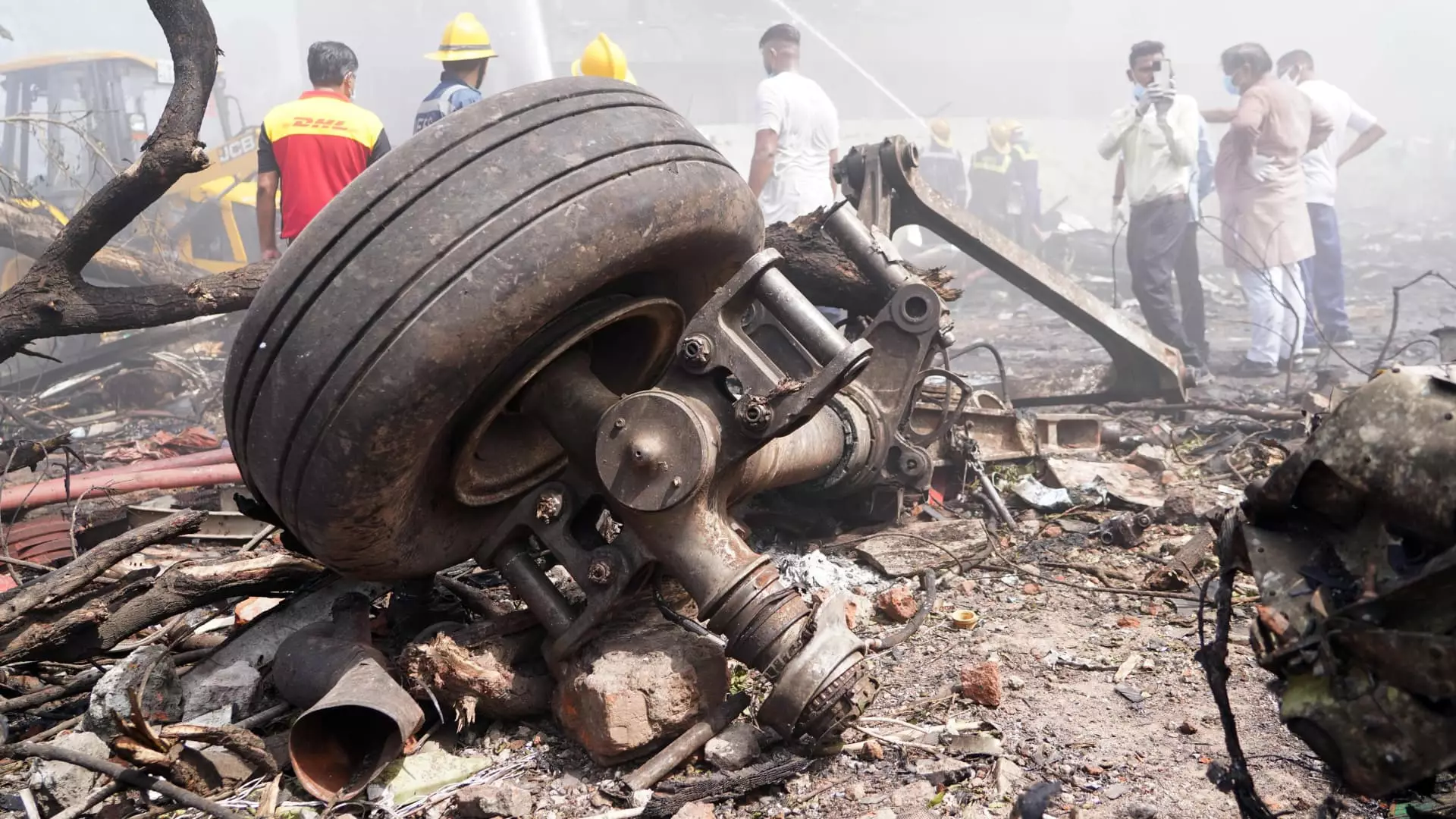The recent crash of an Air India Boeing 787-8 Dreamliner, shortly after takeoff from Ahmedabad, has sent shockwaves through the aviation community and beyond. As reports confirm the heartbreaking death of 241 passengers and crew, with only one survivor, this incident not only marks a tragic loss of life but also raises urgent questions about aviation safety and regulatory oversight. Herein lies a potent reminder that technology, despite its advancements, cannot supersede the unpredictability of human error, mechanical failure, and systemic lapses in safety.
The Timeline of Catastrophe
The fateful flight took off at 1:37 PM local time, and within the span of just 60 seconds, communications with the aircraft ceased abruptly. As emergency responders raced to the scene, it became painfully clear that this was no ordinary mechanical failure but potentially a catastrophic confluence of factors that remain to be extracted from the charred wreckage. It is this rapid descent—from sky to earth—that encapsulates the terrifying vulnerability inherent in modern aviation. The aircraft, capable of soaring at high altitudes and flying long distances, tragically failed to maintain even a modest ascent, reaching an altitude of a mere 625 feet before plummeting into a residential area, emphasizing the stark contrast between the expectations we place on technology and its occasional, horrifying failures.
Questions of Responsibility
In the aftermath of such a disaster, it is only natural that the inquiry will turn to the stakeholders involved—the airline, aircraft manufacturer, and regulatory bodies. Speculation from aviation analysts points toward a multifaceted origin for the crash, yet the root causes are often obscured by a complex interplay between mechanical faults, human errors, and external factors like weather conditions. Critically, the voices of experienced investigators emerge, discounting manufacturing defects after years of service. But this begs the question: how have older models escaped more comprehensive scrutiny, while newer designs await their much-anticipated certification?
Boeing has already weathered waves of criticism surrounding its aircraft safety protocols, particularly following the 737 Max tragedies that highlighted terrifying oversights. Is it conceivable that the manufacturer has once again overlooked critical safety measures for the sake of profits and production quotas? While Boeing refutes allegations of shortcuts taken during the production of the Dreamliner, the industry must grapple with the consistent question of how profit margins can continue to outweigh the sanctity of human life. The enormity of this incident raises grave concerns about the regulatory environment that governs aircraft manufacturing. The layers of oversight that were thought to ensure safety appear to be frail when faced with a scenario like this.
The Emotional Echoes
Beyond the statistical analysis and airplane mechanics lies an emotional landscape that cannot be overstated. Each lost life represents a unique narrative, a family shattered by an unexpected and unspeakable tragedy. The social fabric of the affected communities is irrevocably altered, transcending mere numbers to evoke a visceral reaction of grief and outrage. Such incidents serve as a jarring reminder that the aviation industry, while filled with technical marvels, is also a domain where human lives hang perilously in the balance. The emotional toll of accidents often remains long after the wreckage has been cleared; families endure a lifetime of questions, ‘why’ lingering in their hearts.
A Culture of Complacency?
This tragedy compels a self-reflexive moment for the aviation industry. How is it that a tragic loss of life in a technologically advanced field can repeatedly highlight engineered flaws and procedural gaps? The industry has made strides in safety, yet this incident raises alarm bells about possible complacency. The rich legacy of aviation safety protocols and engineering excellence is sullied by circumstances that suggest a culture more concerned with profit margins than accountability. If there’s a lesson to be learned, it’s that safety in aviation should never be an afterthought; it must be ingrained in the organizational DNA of every airline and manufacturer.
As investigations unfold and flights are grounded, the world watches with bated breath, hoping for answers and accountability. Those of us who travel and rely on air transport are left not merely contemplating the future of aviation, but our own mortality as well. With every crash, we are reminded that behind the sleek designs and impressive technology lies an unpredictable system that requires vigilance, accountability, and above all, respect for human life. It is time for the industry to refocus on safety as its primary mission rather than the relentless pursuit of profit.

